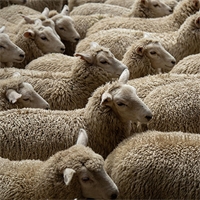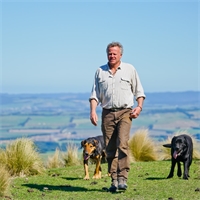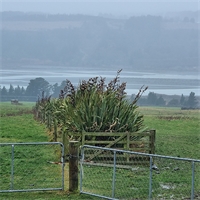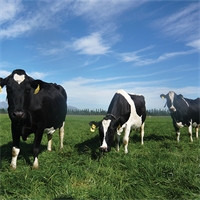14Mar
Winter sown catch crops a win-win
Catch crops, commonly referred to as cover crops are nothing new. Already used extensively in cropping, they are traditionally sown in autumn to provide feed over winter for stock, conserve nutrients and reduce weeds, runoff, and wind erosion.
A Sustainable Farming Funding project is researching sowing catch crops in winter to early spring, directly after forage grazing, to grow valuable feed and reduce nitrogen (N) loss. Livestock grazing on forage crops in winter deposit large quantities of urine-N onto bare soil at a time when greater rainfall and little evapotranspiration means more N leaching. This project is investigating the use of different catch crops species and tillage practices across multiple locations and soil types.
Results of trials carried out on Mid-Canterbury and Southland dairy winter forage blocks last winter were promising. The trails showed sowing a catch crop directly after winter forage grazing can reduce the amount of N at risk of leaching and significantly increase feed production, compared with leaving the soil fallow.
To investigate tillage practices, oats were sown a month apart in two paddocks, and established by cultivation and drilling or direct drilling. Four months later, the first crop, sown in early July on a grazed Kale paddock, was hitting 10 T DM/ha, compared to the approximately 7.5 T DM/ha of the oats sown a month later on a grazed fodder beet paddock (see Figure 1). In both paddocks, the cultivation and drilled oats were doing slightly better than the direct drilled oats but the benefit was offset by higher establishment costs.
At another site in Canterbury, three different species of catch crops – oats, triticale and Italian ryegrass were compared. All were cultivated and drilled, and four months later, the oats had clearly outperformed the other crops, with more than 12 T DM/ha. The triticale and Italian ryegrass had 10 and 6 T DM/ha respectively and were ready for harvest as silage.
Trails conducted in Southland’s wetter and more challenging mid-winter climatic and soil conditions had mixed results. On the downside, a site in Mossburn had the lowest dry matter yield and N uptake of all trials. But in Gore, a one-pass inversion or spader drill enabled a crop to be established six weeks earlier than if it had been cultivated and drilled, resulted in significantly more dry matter and N uptake.
Catch crops can provide farmers with both financial and environmental wins. The calculated net gross profits for the oat crops ranged between $1600 to $2500 per hectare, and over 150 kg of N per hectare was captured, rather than lost over winter and spring before the next crop or pasture was sown.
Ongoing trials will include a greater variety of sites to test catch crops effectiveness across a wider range of climatic and soil conditions. Along with further trialling new tillage technology such as spader-drill and investigate catch crop mixes where the cereal is sown with an annual ryegrass species or similar.
The project was initiated and led by Lincoln Agritech, funded by the Ministry of Primary Industries and co-funded by Ballance Agri-Nutrients and others.
THIS PROMOTIONAL FEATURE WAS PROVIDED BY BALLANCE AGRI-NUTRIENTS
Related

With the farming year winding down, crops harvested, livestock sold, cows dried off and fruit picked...
Read More

Tony Aitken is the first to admit he’s no expert when it comes to farming. Instead, Tony’s experti...
Read More

The Bethells have been synonymous with North Canterbury farming for almost as long as there have bee...
Read More

You may remember the adage: “An animal resting in the shade is not doing what it is meant to be doi...
Read More

Despite uncertainty around Covid and regulatory compliance issues, Ruralco has shown it is more resi...
Read More

Herbage testing for micronutrients (trace elements) supports animal health and production.
Read More